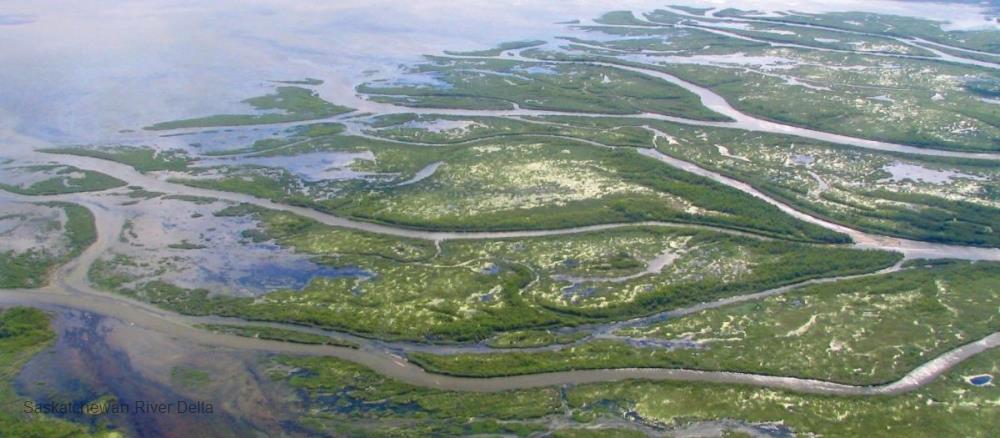
Related items loading ...
Section 1: Overview
Name of Research Project
|
Related Project
|
Part
|
|
NWF: Northern Water Futures
|
|
|
|
|
|
|
|
Program Affiliations
Related Research Project(s)
|
GWF-NWF: Northern Water Futures | |
Dataset Title
Nitrous Oxide Fluxes in Permafrost Peatlands Remain Negligible After Wildfire and Thermokarst Disturbance
Additional Information
PhD Thesis Christopher Schulze - Dataset for journal publication - Nitrous Oxide Fluxes from Permafrost Peatlands in the Taiga Plains
Creators and Contributors
|
Christoper Schulze | | | |
Oliver Sonnentag | | | |
Carolina Voigt | | | |
Lauren Thompson | | | |
Lona van Delden | | | |
Liam Heffernan | | | |
Guillermo Hernandez-Ramirez | | | |
McKenzie Kuhn | | | |
Sisi Lin | | | |
David Olefeldt | | | |
Abstract
The greenhouse gas (GHG) balance of boreal peatlands in permafrost regions will be affected by climate change through disturbances such as permafrost thaw and wildfire. Although the future GHG balance of boreal peatlands including ponds is dominated by the exchange of both carbon dioxide (CO2) and methane (CH4), disturbance impacts on fluxes of the potent GHG nitrous oxide (N2O) could contribute to shifts in the net radiative balance. Here, we measured monthly (April to October) fluxes of N2O, CH4, and CO2 from three sites located across the sporadic and discontinuous permafrost zones of western Canada. Undisturbed permafrost peat plateaus acted as N2O sinks (-0.025 mg N2O m-2 d-1), but N2O uptake was lower from burned plateaus (-0.003 mg N2O m-2 d-1) and higher following permafrost thaw in the thermokarst bogs (-0.054 mg N2O m-2 d-1). The thermokarst bogs had below-ambient N2O soil gas concentrations, suggesting that denitrification consumed atmospheric N2O during reduction to dinitrogen. Atmospheric uptake of N2O in peat plateaus and thermokarst bogs increased with soil temperature and soil moisture, suggesting sensitivity of N2O consumption to further climate change. Four of five peatland ponds acted as N2O sinks (-0.018 mg N2O m-2 d-1), with no influence of thermokarst expansion. One pond with high nitrate concentrations had high N2O emissions (0.30 mg N2O m-2 d-1). Overall, our study suggests that the future net radiative balance of boreal peatlands will be dominated by impacts of wildfire and permafrost thaw on CH4 and CO2 fluxes, while the influence from N2O is minor.
Purpose
Plain Language Summary
The peatlands in the boreal biome of northwestern Canada have been a sink of the potent greenhouse gases (GHG) carbon dioxide (CO2) and nitrous oxide (N2O), and a source of methane (CH4) for many millennia. Now, climate change is transforming these boreal peat landscapes as more severe and frequent wildfires burn the forests and ground ice-rich permafrost thaws. Wildfires and permafrost thaw alter soil biogeochemical conditions such as soil temperature, soil moisture, and water table depth. The changing conditions have immediate effects on GHG production, transport, and consumption in the soil, which are reasonably well understood for CO2 and CH4 but not for N2O. By measuring soil GHG concentrations at different depths and GHG exchange between soil and atmosphere with static chambers, we showed that N2O exchange from different peat surfaces responded differently depending on the two disturbance types. While burned peatland areas were close to neutral regarding N2O, the wet, thaw-affected areas showed increased N2O uptake driven by high soil moisture contents, soil temperatures, and below-atmospheric N2O soil gas concentrations. However, this minor N2O uptake can only offset less than 1% of the global warming potential of CH4 emissions from the thawing peatlands studied here
Keywords
|
climate change |
boreal peatlands |
wildfire |
permafrost thaw |
nitrous oxide |
chamber fluxes |
Citations
Section 3: Status and Provenance
Dataset Version
Dataset Creation Date
2022-11-29
Status of data collection/production
Dataset Completion or Abandonment Date
2022-11-29
Data Update Frequency
Creation Software
Primary Source of Data
Other Source of Data (if applicable)
Data Lineage (if applicable). Please include versions (e.g., input and forcing data, models, and coupling modules; instrument measurements; surveys; sample collections; etc.)
Section 4: Access and Downloads
Access to the Dataset
Terms of Use
Does the data have access restrictions?
Downloading and Characteristics of the Dataset
Download Links and Instructions
Total Size of all Dataset Files (GB)
File formats and online databases
Other Data Formats (if applicable)
.R
List of Parameters and Variables


 GWFNet
GWFNet Master
Master Research
Research Map
Map
 Advanced
Advanced . . .
. . .

 Metadata Editor
Metadata Editor
 Record List
Record List
 Alias List Editor
Alias List Editor
 Legacy sites
Legacy sites